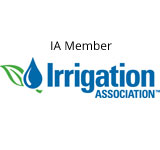As the frost of winter melts away and the vibrant hues of spring emerge, many homeowners in New Jersey find themselves eager to revive their lawns to their former glory or establish new ones altogether. However, amidst the excitement of gardening endeavors, one crucial factor often overlooked is the optimal watering regimen required for nurturing a lush, healthy lawn.
Water is the elixir of life for any green space, and its significance during the spring months cannot be overstated. With fluctuating temperatures and unpredictable weather patterns characteristic of New Jersey in spring, understanding the water needs of your new lawn is essential for its successful growth and development.
Assessing Water Requirements
The first step in ensuring the optimal growth of your new lawn is to understand its water requirements. Several factors influence the amount of water needed, including:
- Grass Type: Different grass species have varying water needs. For instance, cool-season grasses like Kentucky bluegrass and fescue require more water compared to warm-season varieties such as Bermuda grass.
- Soil Type: Soil composition plays a significant role in water retention and drainage. Sandy soils drain water quickly and may necessitate more frequent watering, while clay soils retain moisture for longer periods.
- Weather Conditions: New Jersey’s spring weather can be unpredictable, with periods of rain, sun, and occasional frost. Monitoring weather forecasts helps adjust watering schedules accordingly.
Establishing a Watering Schedule
Creating a consistent watering schedule is vital for the health of your new lawn. Here’s a general guideline to help you establish an effective watering routine:
- Early Morning Watering: Watering early in the morning allows the soil to absorb moisture before the sun’s intensity increases. This reduces water loss due to evaporation and minimizes the risk of fungal diseases.
- Frequency: During the spring months, aim to water your new lawn 1-2 times per week, depending on weather conditions and soil moisture levels. Adjust the frequency as needed to prevent overwatering or drought stress.
- Deep Watering: Instead of frequent shallow watering, focus on deep watering sessions that penetrate the soil to encourage deeper root growth. Typically, 1 inch of water per week is sufficient for most grass types.
- Monitor Soil Moisture: Regularly check the soil moisture levels by inserting a screwdriver or soil moisture meter into the ground. Water when the top 1-2 inches of soil feels dry.
Tips for Efficient Watering
In addition to adhering to a watering schedule, implementing these tips can maximize water efficiency and promote the optimal growth of your new lawn:
- Use Proper Irrigation Equipment: Invest in a quality sprinkler system or hose with a nozzle that provides a gentle, even spray to prevent water runoff and ensure thorough coverage.
- Mulch: Applying a layer of organic mulch, such as grass clippings or compost, helps retain soil moisture, suppresses weed growth, and improves soil structure.
- Aerate the Soil: Aerating the soil reduces compaction and allows water, air, and nutrients to penetrate deep into the root zone, promoting healthy turf growth.
- Rainwater Harvesting: Consider installing a rain barrel to collect and store rainwater for irrigation purposes, reducing reliance on municipal water sources and lowering water bills.
Conclusion
In the quest for a vibrant, verdant lawn in New Jersey’s spring, proper watering practices are paramount. By understanding the water needs of your new lawn, establishing a consistent watering schedule, and implementing water-efficient techniques, you can nurture your green space to flourish and thrive throughout the season and beyond. So, roll up your sleeves, grab the hose, and embark on the journey to lawn perfection—one drop at a time.





